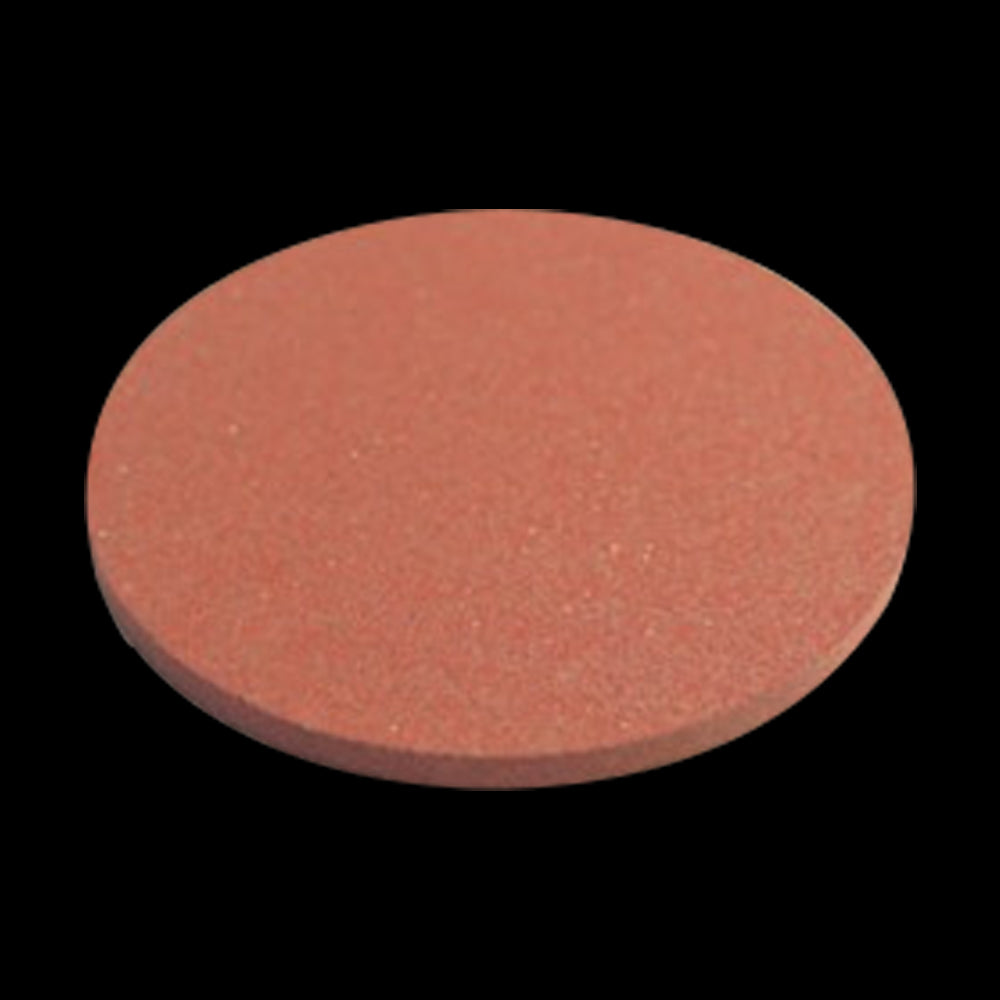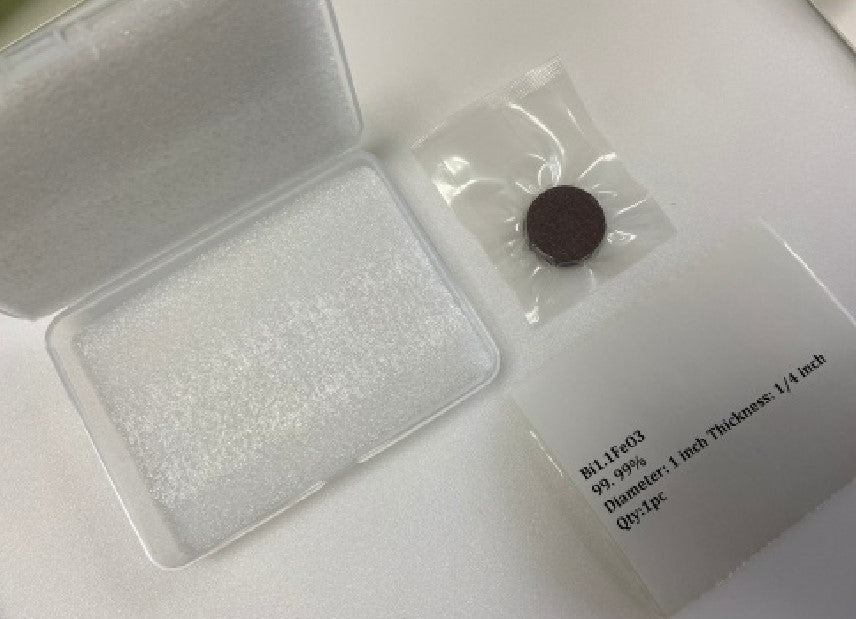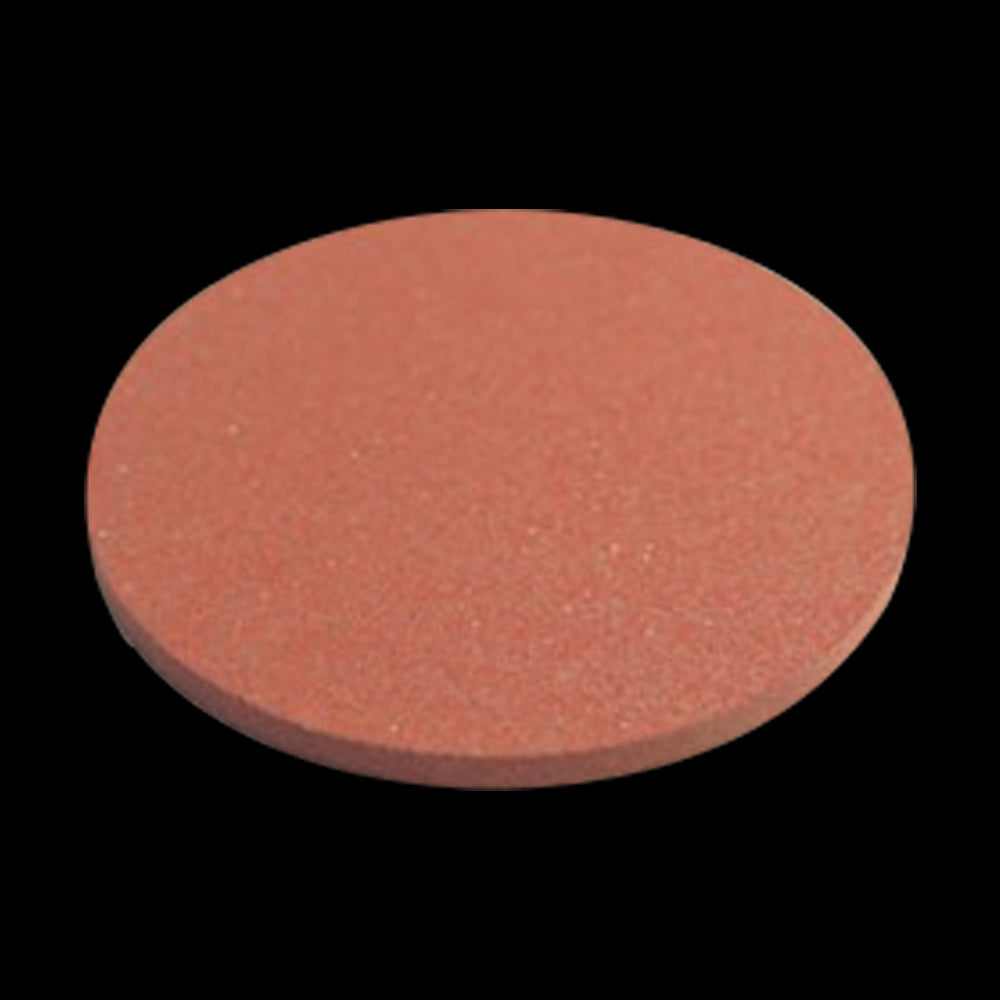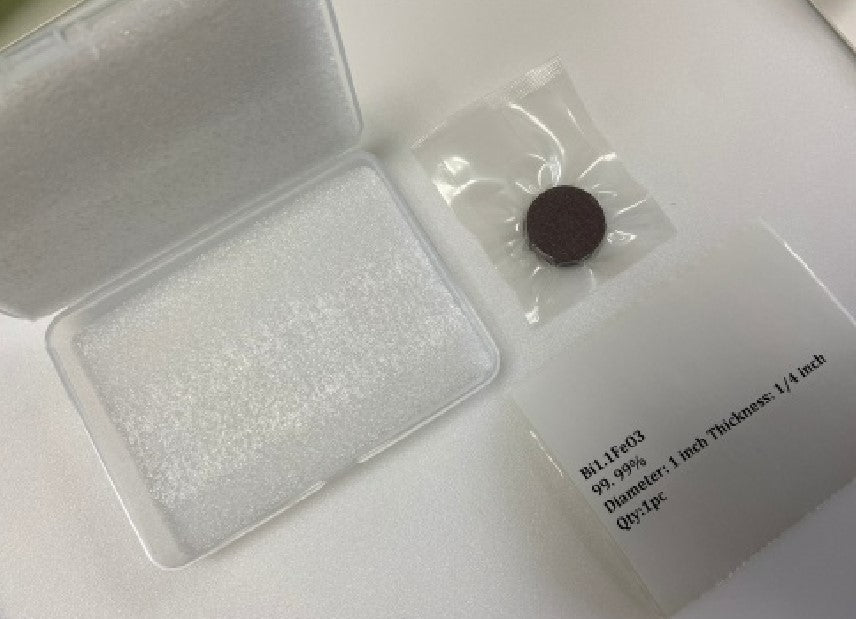Target Materials
Bismuth Ferrite BiFeO3 PLD Target
Bismuth Ferrite BiFeO3 PLD Target
Couldn't load pickup availability
| Material | Bismuth Ferrite |
| Formula | BiFeO3 |
| Common Substrates | SrTiO3, SrRuO3 (conducting layer), nb-doped SrTiO3, LaAlO3, NdGaO3, and DyScO3 |
| Similar Materials | BiMnO3, BiFeO3, Nb:SrTiO3, Pb(Zr,Ti)O3, BaTiO3:Mn |
| Crystal Structure | Perovskite |
General information about the properties of BiFeO3 thin films
Bismuth Ferrite (BiFeO3) is a multiferroic material known for its unique electric and magnetic properties. In 2003, high-quality epitaxial thin films of BiFeO3 were reported, which reignited scientific interest in this material. The great advantage of epitaxial thin films is that their properties can be adjusted through processing or chemical doping, and they can be integrated into electronic circuitry. The crystal structure of BiFeO3 can be modified by epitaxial strain induced by single-crystalline substrates with different lattice parameters, which in turn can change the ferroelectric, piezoelectric or magnetic properties.
Pulsed laser deposition (PLD) is a widely used method to prepare epitaxial BiFeO3 films, typically on SrTiO3 substrates with SrRuO3 electrodes. Other methods of preparing epitaxial BiFeO3 thin films include sputtering and molecular beam epitaxy.
In addition to its electric and magnetic properties, BiFeO3 also exhibits photovoltaic properties, known as the ferroelectric photovoltaic (FPV) effect.
What are the common substrates used for epitaxial growth of BiFeO3
The most common substrate used for epitaxial growth of BiFeO3 is SrTiO3, due to its compatibility with BiFeO3 in terms of lattice mismatch and thermal expansion coefficients. The SrTiO3 substrate is often paired with SrRuO3 electrodes, which are also compatible with BiFeO3. Other substrates that have been used for the epitaxial growth of BiFeO3 include LaAlO3, NdGaO3, and DyScO3. The choice of substrate will depend on the desired properties of the BiFeO3 thin film and the specific growth method being used.
Epitaxial substrates with different lattice parameters than BiFeO3 can induce strain in BiFeO3 films and modify their properties. The epitaxial strain results from the mismatch between the lattice constants of the substrate and the BiFeO3 film, which leads to compression or tension in the film. This strain can then be used to change the crystal structure of the BiFeO3 film, inducing monoclinic or tetragonal symmetry, and modifying its ferroelectric, piezoelectric, and magnetic properties.
For example, growing BiFeO3 on a substrate with a smaller lattice parameter (SrTiO3, LaAlO3, and DyScO3) can lead to compressive strain in the film, which can increase the ferroelectric polarization and enhance the piezoelectric properties. On the other hand, growing BiFeO3 on a substrate with a larger lattice parameter (NdGaO3 and GdScO3) can lead to tensile strain, which can reduce the ferroelectric polarization and weaken the piezoelectric properties.
In general, the specific properties of the BiFeO3 thin film can be tailored by carefully selecting the substrate and optimizing the growth conditions, such as the deposition temperature and pressure. By doing so, it is possible to achieve high-quality epitaxial BiFeO3 films with desired properties for a range of applications in electronics and energy conversion.
Adding Excess Bismuth to Your Target
Excess bismuth is commonly used in BiFeO3 targets as a means of compensating for bismuth loss that occurs during sintering and pulsed laser deposition (PLD) growth processes.
To counteract these losses and ensure that the thin film has the desired stoichiometry of BiFeO3 in thin film form, it is common to add 10% excess of bismuth to the target. If you want a different amount in your targets please let us know.
Common PLD Deposition Conditions for BiFeO3
The common PLD deposition temperature for the deposition of BiFeO3 is typically in the range of 700-900°C. The oxygen pressure used during the deposition of BiFeO3 by PLD is usually in the range of 10-100 mTorr. A higher oxygen pressure leads to higher stoichiometry of oxygen,
Here are five similar thin film materials to BiFeO3
-
Bismuth Manganite (BiMnO3): A ferroelectric material with magnetic properties that is similar to BiFeO3 in terms of its structure and properties.
-
Niobium Doped Strontium Titanate (Nb:SrTiO3): A ferroelectric material that is doped with niobium to induce magnetic properties.
-
Lead Manganite (PbMnO3): A multiferroic material with ferroelectric and magnetic ordering.
-
Lead Zirconate Titanate (Pb(Zr,Ti)O3): A well-known ferroelectric material that can also exhibit magnetic ordering when doped with certain transition metals.
-
Manganese Doped Barium Titanate (BaTiO3:Mn): A ferroelectric material doped with manganese to induce magnetic properties.
Materials
Materials
Shipping & Returns
Shipping & Returns
Dimensions
Dimensions
Care Instructions
Care Instructions


-
Free Shipping
Wherever you are, get free shipping on orders from Target Materials
-
High Quality Packaging
All our targets are vacuum packed, sealed and protected so they arrive with you exactly how they left from us.


